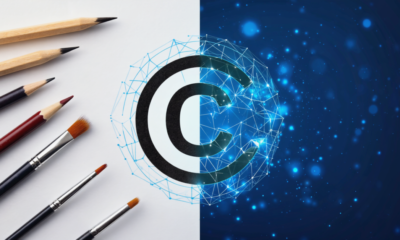Regulation
Key Points in the EU’s New AI Act, the First Big AI Regulation

The European Union's initiative to regulate artificial intelligence marks a pivotal moment in the legal and ethical governance of technology. With the recent AI Act, the EU steps forward as one of the first major global entities to address the complexities and challenges posed by AI systems. This act is not only a legislative milestone. If successful, it could serve as a template for other nations contemplating similar regulations.
Core Provisions of the Act
The AI Act introduces several key regulatory measures designed to ensure the responsible development and deployment of AI technologies. These provisions form the backbone of the Act, addressing critical areas such as transparency, risk management, and ethical usage.
- AI System Transparency: A cornerstone of the AI Act is the requirement for transparency in AI systems. This provision mandates that AI developers and operators provide clear, understandable information about how their AI systems function, the logic behind their decisions, and the potential impacts these systems might have. This is aimed at demystifying AI operations and ensuring accountability.
- High-risk AI Management: The Act identifies and categorizes certain AI systems as ‘high-risk', necessitating stricter regulatory oversight. For these systems, rigorous assessment of risks, robust data governance, and ongoing monitoring are mandatory. This includes critical sectors like healthcare, transportation, and legal decision-making, where AI decisions can have significant consequences.
- Limits on Biometric Surveillance: In a move to protect individual privacy and civil liberties, the Act imposes stringent restrictions on the use of real-time biometric surveillance technologies, particularly in publicly accessible spaces. This includes limitations on facial recognition systems by law enforcement and other public authorities, allowing their use only under tightly controlled conditions.
AI Application Restrictions
The EU's AI Act also categorically prohibits certain AI applications deemed harmful or posing a high risk to fundamental rights. These include:
- AI systems designed for social scoring by governments, which could potentially lead to discrimination and a loss of privacy.
- AI that manipulates human behavior, barring technologies that could exploit vulnerabilities of a specific group of persons, leading to physical or psychological harm.
- Real-time remote biometric identification systems in publicly accessible spaces, with exceptions for specific, significant threats.
By setting these boundaries, the Act aims to prevent abuses of AI that could threaten personal freedoms and democratic principles.
High-Risk AI Framework
The EU's AI Act establishes a specific framework for AI systems considered ‘high-risk'. These are systems whose failure or incorrect operation could pose significant threats to safety, fundamental rights, or entail other substantial impacts.
The criteria for this classification include considerations such as the sector of deployment, the intended purpose, and the level of interaction with humans. High-risk AI systems are subject to strict compliance requirements, including thorough risk assessment, high data quality standards, transparency obligations, and human oversight mechanisms. The Act mandates developers and operators of high-risk AI systems to conduct regular assessments and adhere to strict standards, ensuring these systems are safe, reliable, and respectful of EU values and rights.
General AI Systems and Innovation
For general AI systems, the AI Act provides a set of guidelines that attempt to foster innovation while ensuring ethical development and deployment. The Act promotes a balanced approach that encourages technological advancement and supports small and medium-sized enterprises (SMEs) in the AI field.
It includes measures like regulatory sandboxes, which provide a controlled environment for testing AI systems without the usual full spectrum of regulatory constraints. This approach allows for the practical development and refinement of AI technologies in a real-world context, promoting innovation and growth in the sector. For SMEs, these provisions aim to reduce barriers to entry and foster an environment conducive to innovation, ensuring that smaller players can also contribute to and benefit from the AI ecosystem.
Enforcement and Penalties
The effectiveness of the AI Act is underpinned by its robust enforcement and penalty mechanisms. These are designed to ensure strict adherence to the regulations and to penalize non-compliance significantly. The Act outlines a graduated penalty structure, with fines varying based on the severity and nature of the violation.
For instance, the use of banned AI applications can result in substantial fines, potentially amounting to millions of Euros or a significant percentage of the violating entity’s global annual turnover. This structure mirrors the approach of the General Data Protection Regulation (GDPR), underscoring the EU's commitment to upholding high standards in digital governance.
Enforcement is facilitated through a coordinated effort among the EU member states, ensuring that the regulations have a uniform and powerful impact across the European market.
Global Impact and Significance
The EU's AI Act is more than just regional legislation; it has the potential to set a global precedent for AI regulation. Its comprehensive approach, focusing on ethical deployment, transparency, and respect for fundamental rights, positions it as a potential blueprint for other countries.
By addressing both the opportunities and challenges posed by AI, the Act could influence how other nations, and possibly international bodies, approach AI governance. It serves as an important step towards creating a global framework for AI that aligns technological innovation with ethical and societal values.











